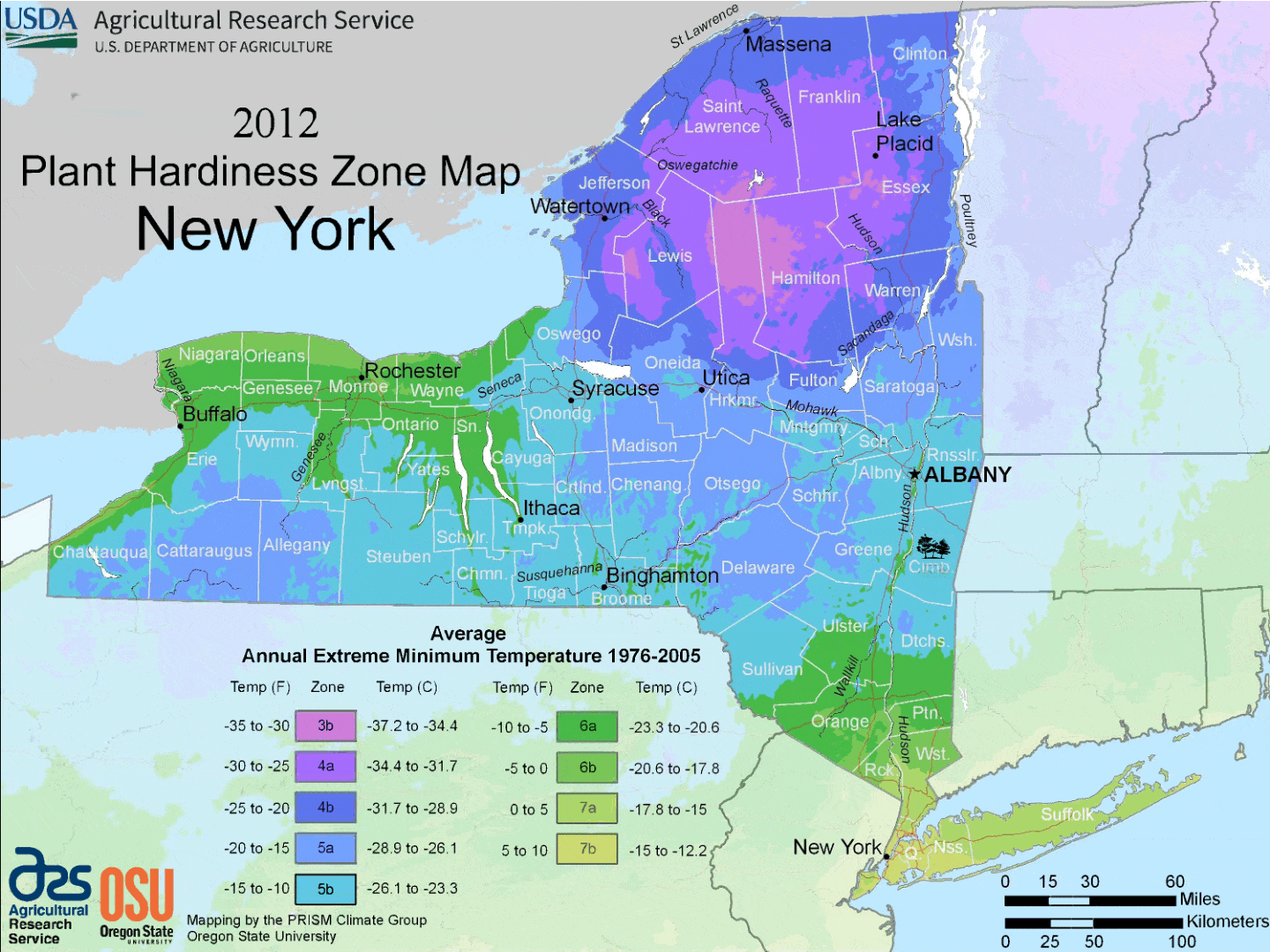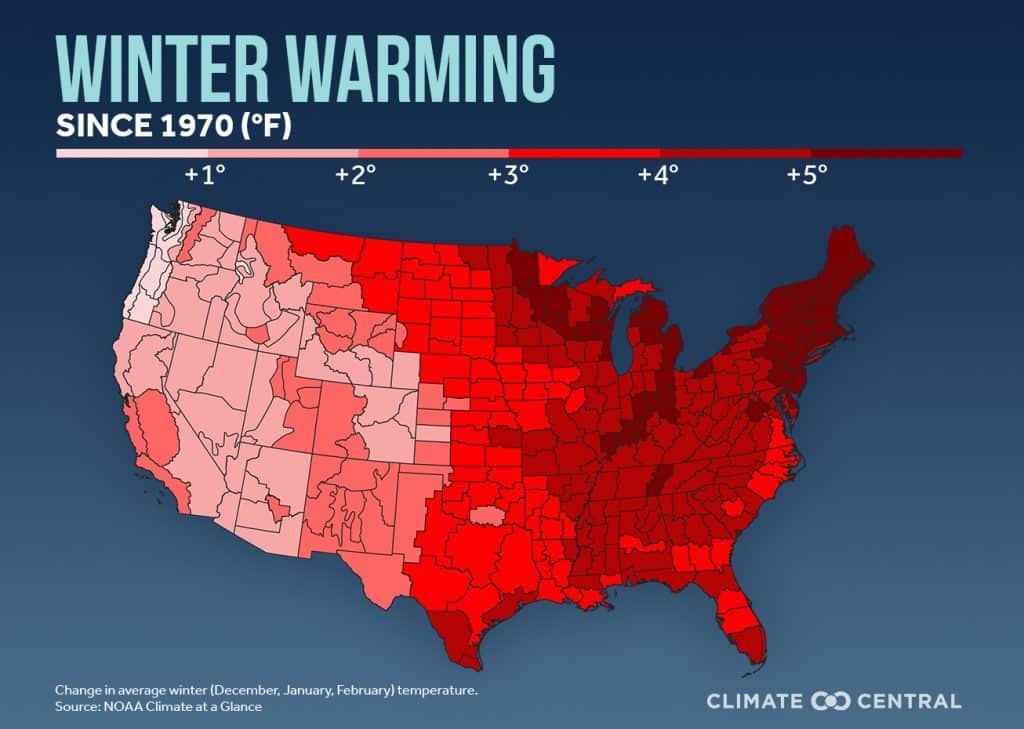Fall ’25 Bare-Roots – Order Now – Farm Pickup or Shipping Starts 11/24
Fall ’25 Bare-Roots – Order Now – Farm Pickup or Shipping Starts 11/24
|

Climate change is shifting ecological plant hardiness zones. The USDA has updated its Plant Hardiness Zone Map for the first time since 2012. Most of New York’s Hudson Valley has shifted from Zone 5b to Zone 6a (see map below). This means the lowest winter temperature recorded over the past 30 years (1991 to 2020) is on average 5°F warmer compared with the period between 1976 to 2005. The data underlying these changes corroborate our experience of warmer and less snowy winters. Just this week, the Northeast U.S. experienced a massive storm with over 2″ of rain in many areas and temperatures in the mid-50s all the way up to northern Maine. Unseasonable and intense weather whiplashes farms and forests with new pest and disease pressures, unleashes alternating periods of flooding and drought, and fundamentally changes habitat for native flora and fauna.
Yet greenhouse gas emissions continue to rise and the trend compounds the changes. Within the next thirty years plant hardiness in our area is expected to shift another 5-10°F warmer. If we fail to become carbon neutral over the next few decades, we can expect plant hardiness to shift another 5-10°F by the end of the century. There are seasonal and regional differences to the pace of warming. Winter is warming faster than other seasons, and the Northeast and Upper Midwest are facing more rapid warming than other parts of the country. The following map depicts winter temperature data over the past 50 years.

In addition to warmer winters, we’re also experiencing more extreme hot days per year (measured by days above 86°F). When it’s this hot, both people and plants become less productive (or worse). Between 1980-2009 the Northeast had an average of two and a half weeks per year of extreme heat. At the current pace of global warming, we can expect about 6-10 weeks per year above 86°F by midcentury, and a whopping four months per year by the end of the century. If we transition to a carbon neutral economy by midcentury, the number of extremely hot days should stabilize at around six weeks per year by midcentury, which is still something to which we’ll need to adapt.
The climate throughout much of the Northeast is rapidly becoming similar to weather typical of the Mid-Atlantic. By the latter part of this century, the Northeast is on course to become similar to that of the Carolinas. Unlike other similar changes over eons past, which occurred over hundreds of thousands or millions of years, these changes are happening within a few generations. Rapidly changing climate zones stress native plants and animals, and create ecological mayhem. These changes threaten agricultural productivity, ecosystem services like clean water and air, and the overall ecological health and resilience of the Earth.
Trees help us to both mitigate and adapt to climate change. They’re one of nature’s most effective carbon capture and storage systems, sequestering nearly 60 gigatons of carbon in U.S. forests (above and below ground). This represents about a decade of greenhouse gas emissions in the U.S. at current levels. Without this carbon sink, global greenhouse gas levels would be climbing even faster. Forests also provide an array of other climatological and ecological benefits: clean water and air, wildlife habitat, moderation of temperature and precipitation extremes, and a sustainable source of food, fuel, and fiber.
Let’s protect and restore forestlands in the coming decades by planting climate-resilient trees in our yards, on our farms, and at local parks.